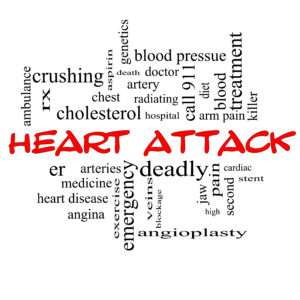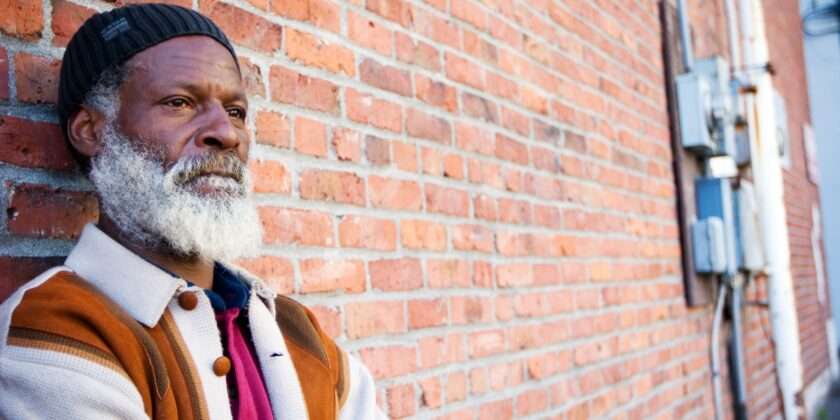“You have to think a little smarter, be proactive, not reactive.” This quote by Frank Abagnale could save your loved one’s life. Jay Harold has been part of the “Code Blue” Team which is called when a medical emergency occurs. Here’s a possible sequence of events that led to the Code Blue.
A wife notices her husband has shortness of breath and calls 911. The medics arrive and stabilizes the patient and since the patient doesn’t want to go the hospital, they ask the patient to follow up with a doctor. A week later, the patient is in the ER fighting for his life. What happened?
The medics arrived within 5 minutes of the 911 call and immediately started CPR. The problem is that the family didn’t start CPR during the critical time between the call and the medic arriving. Brain cells are very sensitive to a lack of oxygen. Some brain cells start dying less than 5 minutes after their oxygen supply disappears. As a result, brain hypoxia can rapidly cause severe brain damage or death1 .
When someone’s blood flow or breathing stops, seconds count. Permanent brain damage or death can happen quickly. If you know how to perform cardiopulmonary resuscitation (CPR), you could save a life. CPR is an emergency procedure for a person whose heart has stopped or is no longer breathing. CPR can maintain circulation and breathing until emergency medical help arrives2 .
Cardiac arrest – an electrical malfunction in the heart that causes an irregular heartbeat (arrhythmia) and disrupts the flow of blood to the brain, lungs and other organs – is a leading cause of death. Each year, more than 350,0003 out-of-hospital cardiac arrests occur in the United States according to the American Heart Association.
When a person has a cardiac arrest, survival depends on immediately getting CPR from someone nearby. Almost 90 percent of people who suffer out-of-hospital cardiac arrests die. CPR, especially if performed in the first few minutes of cardiac arrest, can double or triple a person’s chance of survival.
Be the Difference for Someone You Love
Cardiac Arrest vs. Heart Attack Infographic4
People often use these terms interchangeably, but they are not the same.

What is a Heart Attack?
A HEART ATTACK occurs when blood flow to the heart is blocked.
A heart attack is a “CIRCULATION” problem.
A blocked artery prevents oxygen-rich blood from reaching a section of the heart. If the blocked artery is not reopened quickly, the part of the heart normally nourished by that artery begins to die.
WHAT HAPPENS?
Symptoms of a heart attack may be immediate and may include intense discomfort in the chest or other areas of the upper body, shortness of breath, cold sweats, and/or nausea/vomiting. More often, though, symptoms start slowly and persist for hours, days or weeks before a heart attack. Unlike with cardiac arrest, the heart usually does not stop beating during a heart attack. The longer the person goes without treatment, the greater the damage.
What is a Cardiac Arrest?
Seconds later, a person becomes unresponsive, is not breathing or is only gasping. Death occurs within minutes if the victim does not receive treatment.

WHAT TO DO5
• First, call 9-1-1 and start CPR right away.
• Then, if an Automated External Defibrillator (AED) is available, use it as soon as possible.
• If two people are available to help, one should begin CPR immediately while the other calls 9-1-1 and finds an AED. Almost everyone knows someone who has been affected by unexpected cardiac arrest. In fact, out-of-hospital cardiac arrest (OHCA) ranks among the top three types of cardiac disease that claim lives annually. Unfortunately, only seven percent3 of the 300,000 people who experience OHCA in the U.S. each year survive — that’s a staggering 279,000-plus deaths. Despite the fact that almost two-thirds of these cases are treated by emergency medical services (EMS) providers, community rates of OHCA survival are generally low. So what is the key to increasing the odds of survival for individuals who experience OHCA? The key is quickly and effectively implementing “chain of survival.”
The five links in the chain of survival are:
1) Immediate recognition of cardiac arrest and activation of the emergency response system;
2) Early cardiopulmonary resuscitation (CPR) with an emphasis on chest compressions;
3) Rapid defibrillation;
4) Effective advanced life support;
5) Integrated post-cardiac arrest care.
However, many communities can’t measure how effectively the chain is activated without adequate performance measures, thus losing opportunities to improve emergency cardiac care and save lives. In 2004, the Centers for Disease Control and Prevention began collaboration with Emory University and the American Heart Association to take a closer look at whether all the links in the chain were working properly, by developing the Cardiac Arrest Registry to Enhance Survival (CARES.)
 CARES6 is a secure, quality assurance program designed to increase OHCA survival rates by collecting data to help communities identify areas in the EMS system that need attention, and implement improvements based on the results. The registry, which CDC piloted in the Atlanta area in 2005, has expanded to 40 participating communities in 25 states, as well as nine state-based registries (Arizona, Delaware, Hawaii, Illinois, Minnesota, North Carolina, Minnesota, Utah, and Washington). CARES, which is managed by Emory University, has been a critical first step in reducing the overall OHCA death toll. The program fully transitioned to the private sector in 2012. Partners who support CARES include the American Red Cross, Medtronic Foundation, American Heart Association, and Zoll Corporation and the Woodruff Health Science Center at Emory University.
CARES6 is a secure, quality assurance program designed to increase OHCA survival rates by collecting data to help communities identify areas in the EMS system that need attention, and implement improvements based on the results. The registry, which CDC piloted in the Atlanta area in 2005, has expanded to 40 participating communities in 25 states, as well as nine state-based registries (Arizona, Delaware, Hawaii, Illinois, Minnesota, North Carolina, Minnesota, Utah, and Washington). CARES, which is managed by Emory University, has been a critical first step in reducing the overall OHCA death toll. The program fully transitioned to the private sector in 2012. Partners who support CARES include the American Red Cross, Medtronic Foundation, American Heart Association, and Zoll Corporation and the Woodruff Health Science Center at Emory University.
Bibliography
- https://medlineplus.gov/ency/article/001435.htm
- https://medlineplus.gov/cpr.html
- http://cpr.heart.org/AHAECC/CPRAndECC/AboutCPRFirstAid/CPRFactsAndStats/UCM_475748_CPR-Facts-and-Stats.jsp
- http://cpr.heart.org/AHAECC/CPRAndECC/AboutCPRFirstAid/CardiacArrestvsHeartAttack/UCM_475893_Cardiac-Arrest-vs-Heart-Attack-Infographic.jsp
- https://www.cdc.gov/about/24-7/savinglives/cares/index.html
- https://mycares.net/




